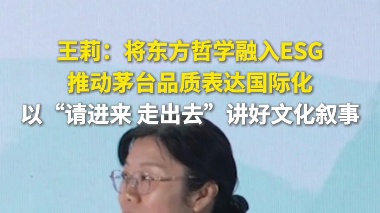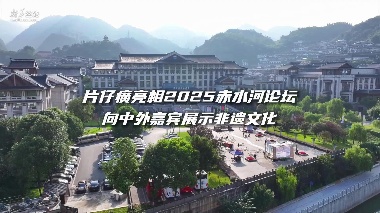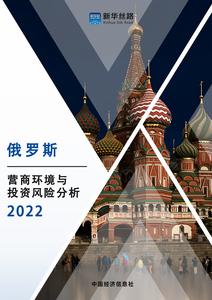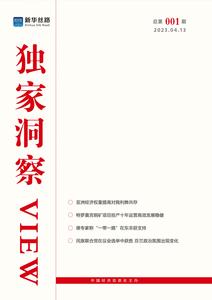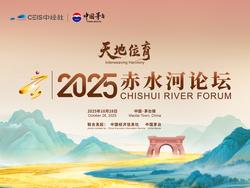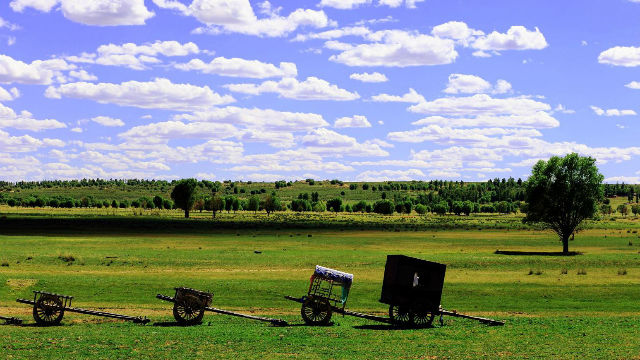
鄂尔多斯草原
Grassland in Ordos covers an area of 97.852 million mu, accounting for 75.3% of the city's total area, of which 87.391 million mu of grassland are available, accounting for 89.3% of the total grassland area and constituting a principal part of the city's ecological security barrier. Ordos is located in the transition zone from desert to grassland, where four types of zonal vegetation are distributed from east to west, namely temperate typical steppe, temperate desert steppe, temperate steppe desert and temperate desert, and two types of intra-zonal and non-zonal vegetation, namely low and flat temperate meadows and temperate swamp, are also located. Among them, temperate desert steppe is the largest. Located in a cross area of several natural zones, Ordos is characterized by a variety of grassland types and rich plant resources. There are 99 families, 437 genera and 1054 species of plants in the whole city.
Ordos grassland has harsh climate and poor geographical conditions, with an annual precipitation of less than 300 mm, and its inter-annual and spatiotemporal distribution is not uniform, known as "Drought prevails almost every year". Affected by low temperature, a short frost-free period, a thin soil layer and the depletion of soil, the ecosystem itself suffers from fragility and instability, and reverse succession will occur once the vegetation communities are destroyed.
Rapid growth of the population, long-term excessive exploitation of grassland and overgrazing during the 1980-90s resulted in grassland quality decline year by year as well as an embarrassing situation where desertification increased and the people were forced to retreat. In order to completely reverse the passive situation, a number of strategies for development of agriculture and animal husbandry have been proposed since 2000, including "construction of a city with extensive greening and powerful animal husbandry" and "urban-rural integration, intensive development"; a series of policies and measures to promote ecological protection of grassland have been formulated; the planting structure of agriculture and breeding structure of animal husbandry were vigorously adjusted; the development mode of animal husbandry was innovated; capital investment was increased to vigorously develop the grass industry. As a result, protection and construction of the grassland ecology and development of grass industry have entered a new stage of development.
In 2000, Ordos took the lead in China by implementing the policy for grazing prohibition, rest grazing and for striking a balance for livestock husbandry, so as to promote rapid restoration of grassland ecology. For national key ecological project zones in rural areas, half agriculture-half pastoral areas and pastoral areas as well as ecological deterioration areas, grazing was forbidden on a whole-year basis. For other areas, rest grazing was implemented from each April to June, and livestock was decided by grass after the end of rest grazing, so as to achieve grassland-livestock balance. In 2016, a new round of subsidies and incentives in grassland ecology was introduced. A total of 97.814 million mu were covered, including 53.522 million mu of forbidden grazing grassland, accounting for 54.7% of the total area of grassland, and 44.292 million mu of grassland-livestock balance area, accounting for 45.3% of the total area of grassland.
The "Three-zone" planning was fully implemented, so as to promote self-restoration of grassland ecology. At the beginning of 2007, the "Three-zone" planning for rural pastoral areas was introduced in Ordos, which divided the whole city into forbidden development zone, restricted development zone and optimized development zone for agriculture and animal husbandry, and it specified the ecological function orientation of each zone as well as layout of its population and productivity. In addition, population in the forbidden development zone was encouraged to gradually immigrate into the city or town, so as to restore ecology and construct a green ecosystem barrier relying on the power of nature. At present, an ecological restoration area with a total size of 2.24 square kilometers has been built in Ordos, accounting for 27% of the city's total area.
Great efforts were made to strengthen grassland protection and construction on the basis of key ecological protection projects. Meanwhile, Ordos has been actively striving for and elaborately preparing for and implementing the national and local key projects for grassland ecological construction, and has achieved certain results in grassland protection, construction and utilization. In recent years, a total of 57.43 million mu of grazing land has been restored to grassland, with an investment of RMB 1.303 billion. From 2011-2015, an average of 100.68 million mu were covered by the national grassland ecological subsidy and incentive mechanism annually, which achieved full coverage of grassland area and allocated a total of RMB 2.957 billion of subsidies. Since 2016, a new round of subsidies and incentives in grassland ecology has been introduced, and a total of 97.814 million mu were covered. Since 2013, Beijing-Tianjin Sandstorm Source Control Phase II Engineering has been launched, which covers all aspects from seeding to breeding, including artificial seeding, grass seed base construction, aerial seeding, construction of grass storage sheds, greenhouses and silage silos. In addition, relevant policies on development of "grassland animal husbandry" issued by the Central Committee were actively implemented. In 2015, Otog Front Banner was listed as a national demonstration banner for pilot development of grassland animal husbandry, with an annual construction budge of RMB 10 million and a construction period of 6 years. In 2016, Uxin Banner and Otog Banner were identified as municipal pilot banners, so as to accelerate the development of grassland animal husbandry in Ordos and explore more development modes.
Reform of the grassland ecological protection system was deepened, so as to promote the transformation and development of grassland animal husbandry. In order to fully mobilize the enthusiasm of farmers and herdsmen to protect grasslands, transform the production mode of animal husbandry, promote reasonable flow of grasslands and pasturelands and boost the development of appropriate large-scale operations, the city further pushed ahead its work on determining the ownership of grasslands and pasturelands, and on the basic delineation of grassland; it also actively promoted the construction of digital grassland as well as the monitoring and evaluation of grassland ecology. All such efforts have promoted the transformation and development of grassland animal husbandry. Up to now, a total of 74.916 million mu of grassland with clearly determined ownership has been contracted, accounting for 77% of the general task.
The enforcement of administrative law was strengthened for grassland, so as to better protect it according to law. With the acceleration of economic development and urbanization in Ordos, activities related to the reclamation, occupation and destruction of grassland are on the rise. In order to better regulate the utilization of grassland, local regulations suitable for the development of the region were formulated in accordance with relevant laws and regulations of China and the autonomous region, and the administrative law enforcement system of grassland was further improved. On this basis, the law enforcement departments of grassland continued to intensify law enforcement for grassland protection, and stipulated the irregular inspection mechanism at city-, banner- and Sumu township- levels; those who conduct grazing without permission, overgrazing, grassland reclamation and other illegal conducts would be severely punished according to law, thus further standardizing the grassland requisition, occupation and management of temporary use of grassland, and effectively promoting legalized approval for grassland requisition and occupation. In addition, great efforts were made to shift the awareness of farmers and herdsmen about grassland protection from a passive obligation to active deeds.
Construction of artificial breeding grassland was energetically advanced, so as to pave the way for sustainable development. On the basis of comprehensively strengthening grassland protection, Ordos has actively developed water-saving irrigation for artificial breeding grassland, so as to well integrate protection, development and utilization. Firstly, the approaches of continuous aerial seeding and mechanical reseeding were implemented to develop shrub planting for sand control. As of the end of 2016, an area of 8.972 million mu had reserved for caragana, 2.492 million mu for hedysarum mongolicum and 1.551 million mu for artemisia desertorum. Secondly, the internal structure of the planting industry was actively adjusted, and the ratio of high-quality and high-efficiency forage planting was increased in accordance with the development concept of "seeding for breeding". At present, the proportion of food crops, economic crops and forage crops has increased from 63:23:14 in 2000 to 54:18:28 in 2016. Thirdly, centered on water-saving irrigation, the planting scale of alfalfa and other excellent forages was further expanded, relying on high yield and high-quality alfalfa demonstration construction projects and Beijing-Tianjin Sandstorm Source Control Phase II Engineering, etc. By the end of 2016, the retention area for planting alfalfa had reached about 1.193 million mu in Ordos.
For years, priority has been given to the protection and construction of grassland ecology in agriculture and animal husbandry. Particularly in recent years, grassland construction has been further intensified as a result of the impetus of various projects, and the grassland ecological environment has undergone a historic change from serious deterioration to overall containment.
The ecological environment of grassland has improved significantly. "Three ecological problems of grassland", namely degradation, desertification and salinization, have been effectively managed. The trend of degradation and desertification has been effectively alleviated. The ecological environment in some areas has improved remarkably, and has developed in a virtuous circle. A number of ecological indices such as the coverage and height of grassland vegetation, as well as pasture yield and species diversity have been improved greatly. The average vegetation coverage increased to around 70% from less than 30% before 2000; the average height of grass communities increased to 35 mm from about 15 cm in the past, and the average yield of hay increased to 57.3 kg/mu from 40 kg/mu. In addition, the proportion of poisonous and harmful plants in natural grassland decreased significantly, and the number of wild animals increased. All in all, the grassland vegetation was getting better.
The development mode of grassland agriculture and animal husbandry has been effectively changed. For a long time, policy guidance and implementation of ecological projects have been strengthened, the improvement of natural grass has been promoted and the artificial cultivation of high-quality grass has been expanded, so that rich resources of grass and forage were achieved. Meanwhile, great efforts were made to intensify infrastructure construction such as livestock sheds and grass and forage reserves, so that forbidden grazing, rest grazing, rotational grazing and standardized confined feeding policy were implemented smoothly. Furthermore, resources of agriculture and animal husbandry were allocated effectively; the industrial layout, population distribution and ecological construction layout were optimized, and the consumption of natural resources by human activities was reduced, thus resulting in relieved ecological pressure. The production and management mode of agriculture and animal husbandry has changed from "livestock relying on nature" to standardized confined feeding and from "extensive cultivation" to "seeding for breeding". The economic structure of agriculture and animal husbandry was greatly adjusted and optimized, so that a new mode that integrates the development of ecological animal husbandry with planting and breeding has basically formed.
The per capita income of farmers and herdsmen has steadily increased. With the further implementation of the policy of protection and construction of grassland, the transformation and upgrading of grassland animal husbandry has been sped up, the income of farmers and herdsmen has been effectively promoted, and the proportion of policy revenue to total revenue has constantly increased. In particular, a subsidy and incentive mechanism has been launched by China since 2011, and it, covering the whole grassland of Ordos, has become the largest preferential policy for farmers and herdsmen to benefit from grassland. The annual subsidy per household reached RMB 2,856. Thanks to the optimized composition of livestock herds, changed production mode, accelerated turnover of livestock herds and improved production efficiency, the income of farmers and herdsmen has steadily grown, and their per capita disposable income also rose to RMB15, 480 in 2016 from RMB 2,453 in 2000.
More advanced technologies have been employed in grassland protection, construction and utilization. In recent years, the research and popularization of suitable technologies related to grassland have been developing greatly. Particularly, a large number of achievements in scientific research have been made and they specifically involve: the implementation of grassland ecological construction projects; the selection and cultivation of new forage species; the monitoring of grassland resources, the prevention and control of diseases, pests and mice; the work on artificial seeding, grassland improvement, production and processing of grass products and breeding of herbivorous livestock, etc.. As scientific theories have been enriched and developed constantly, relevant technical standards and regulations have also been improved, which yields favorable economic and social benefits.
